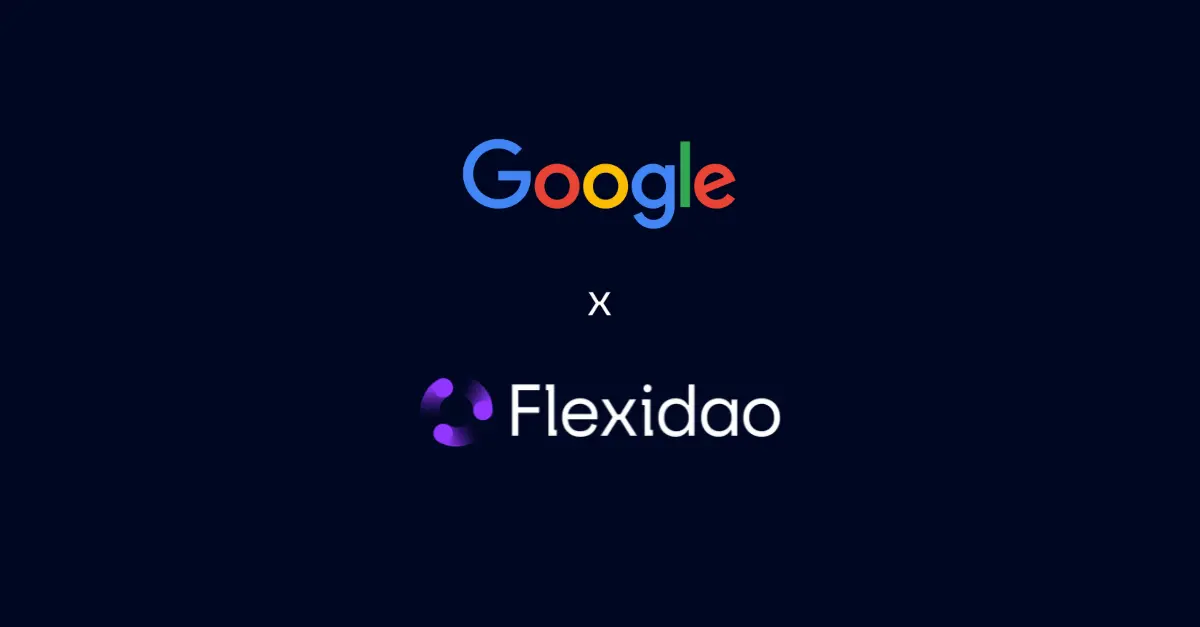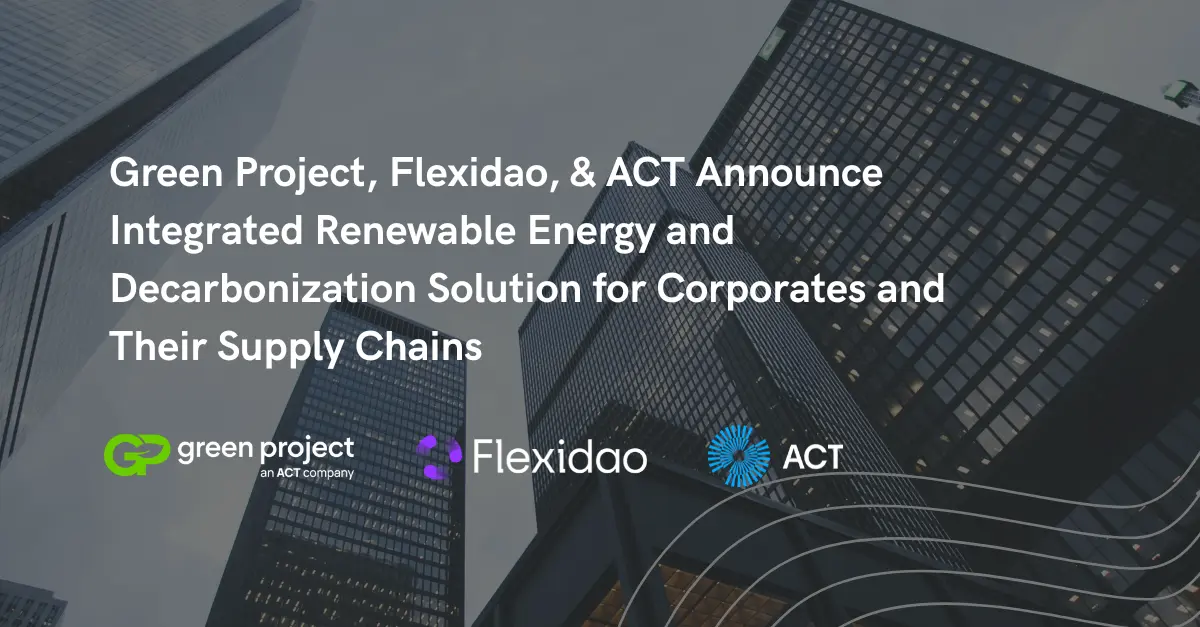Science-Based Targets Initiative (SBTI) For Companies Explained
Science-Based Targets Initiative (SBTI) For Companies Explained
Understand science-based targets for companies and how Flexidao helps achieve sustainability goals with our solutions.
It's been over five years since the Paris Agreement was adopted by 196 nations worldwide. The parties that ratified the agreement currently account for around 97 percent of global GHG emissions. While governments and national leaders plan to advance efforts in the fight against climate change, businesses are taking the initiative and stepping up their contribution. Climate change is now firmly on the boardroom agenda, while digitalisation and electrification are the big bets to foster this transition. If your company is considering taking climate action, setting targets under a globally recognised initiative is one of the first measures that you can take.
What is the Science-Based Target Initiative?
The Science-Based Targets Initiative (SBTi) was established in 2015 through a partnership between CDP, World Resources Institute (WRI), the World Wide Fund for Nature (WWF), and the United Nations Global Compact (UNGC). The objective of the SBTi is to show companies how to create effective GHG emission reduction strategies. It allows companies to be confident that their strategies will help to mitigate the worst effects of climate change.
The total emissions covered under the initiative has been growing rapidly since its inception. As of 2020, over 1.1 Gigatonnes of CO2e emissions (Scope 1 & 2) is disclosed by science-based target companies. For more insight on Scope 2 emissions, read this article: Reporting Scope 2 Emissions: GHG Protocol Explained.

Importance of SBTi
Adhering to the Paris Agreement requires a structured approach. SBTi provides this framework, enabling companies to set science-based emissions reduction targets. This not only future-proofs businesses but also enhances their reputation and investor appeal. By committing to SBTi, companies demonstrate their dedication to SBTi sustainability and can leverage this commitment to attract environmentally conscious consumers and investors.
What are Science-Based Targets (SBTs)?
Based on the SBT definition, “targets are considered ‘science-based’ if they’re in line with what the latest climate science deems necessary to meet the goals of the Paris Agreement – limiting global warming to well-below 2°C above pre-industrial levels and pursuing efforts to limit warming to 1.5°C.”
To break it down simply, the main goal of the Paris Agreement is to keep the planet's warming below 1.5°C. We can achieve this but it requires global emissions to reach “net-zero” by 2050. By setting an SBT for 1.5°C, a company is essentially putting a plan in place to reach “net-zero” company emissions by 2050. A Science-Based Target will set out a pathway of gradual emission reductions each year until 2050.

It's unlikely that all science-based target companies will be able to achieve “net-zero” emissions through internal emission reduction initiatives alone. For example, some sectors such as aviation may find it challenging to find alternate cost competitive zero-carbon fuels in time. Therefore, carbon offsetting or removal may be also required to achieve “net-zero” targets by 2050.
How to set a Science-Based Target?
There are five steps to set a Science-Based Target.
- Step 1: Commit to set a science-based target - Submit a letter to the SBTi establishing your intent to set a science-based target.
- Step 2: Develop a target – Create an emissions reduction target in line with the SBTi’s criteria. Different methodologies will apply for different sectors (see below). For example, reduce emissions 50 percent by 2030.
- Step 3: Submit your target for validation - Present your target to the SBTi for a complete validation.
- Step 4: Communicate the target - Announce your target and inform your customers, investors, and other stakeholders.
- Step 5: Disclose your progress - Report company-wide emissions and track target progress annually.
Different approach for different sectors
When setting a Science-Based Target (SBT), one of the most important things to consider is what methodology will be used to set the target. The two most common methodologies that are used across industry are the Absolution Contraction and Sectoral Decarbonisation Approach.
- Absolution Contraction Approach: This method is based on the absolute emissions in a chosen base year. It uses an annual linear reduction rate to achieve the emission reduction target set. For example, take a company with 10,000 tCO2e emissions in 2020 who has targeted a 70 percent absolute emission reduction by 2035. This would require a linear reduction rate of 4.7 percent or 470 tCO2e per year. This creates a very simple but effective annual target for the company. Based on the SBTi’s latest guidance, the minimum reduction rate required for a 1.5˚C future is 4.2 percent.
- Sectoral Decarbonisation Approach: This method is used for specific sectors based on the SBTi guidance. Each sector has its own specific carbon budgets determined by emission mitigation/technology options available and industry activity projections. For example, the power sector could double output by 2050, but there are many options available to decarbonise the sector. Whereas, steel sector outputs may not grow as fast, options are limited at the moment to decarbonise this sector. These factors are taken into consideration for companies setting targets under this approach.
Some sectors can choose amongst different methodologies depending on the industry:

Main climate initiatives available to companies
There are many climate initiatives available for companies to join. Initiatives can be specific to certain areas such as RE100 (Renewable Energy Targets) or EV100 (Electric Vehicles Targets). Or they can cover a company’s entire emission portfolio.
The Science-Based Targets Initiative (SBTi) and the Climate Pledge are the leading platforms for setting globally recognised emission targets. In terms of popularity, the SBTi is the leader in the space with over a thousand companies setting targets based on its guidance.

The new Net-Zero Standard
The SBTi has lately recognised the importance of setting corporate net-zero targets, as they will play a critical role in addressing the climate emergency. But currently, net-zero goals lack a robust benchmark to guide corporates in the right direction. This has triggered some scepticism around net-zero as a concept. Some criticisms include:
- Incomplete boundary: Selective inclusion of emission sources in corporate net-zero targets
- Delayed action: Lack of interim milestones for long-term targets.
- Mitigation deterrence: Focus on offsetting instead of on reducing emissions.
- Poor accountability: Lack of scrutiny and accountability on voluntary commitments.
This is why the SBTi has developed a Net-Zero Standard, which will officially begin validating corporate net-zero targets in January 2022.
What are the key requirements of this Net-Zero Standard?
- Focus on rapid, deep emission cuts: Rapid, deep cuts to value-chain emissions are the most effective and scientifically-sound way of limiting global temperature rise to 1.5°C. This is the central focus of the Net-Zero Standard and must be the overarching priority for companies. The Net-Zero Standard covers a company’s entire value chain emissions, including those produced by their own processes (scope 1), purchased electricity and heat (scope 2), and generated by suppliers and end-users (scope 3). Most companies will require deep decarbonisation of 90-95% to reach net-zero under the Standard.
- Set near- and long-term targets: Companies adopting the Net-Zero Standard are required to set both near-term and long-term science-based targets. This means making rapid emissions cuts now, halving emissions by 2030. By 2050, organizations must produce close to zero emissions and will neutralise any residual emissions that are not possible to eliminate
- No net-zero claims until long-term targets are met: A company is only considered to have reached net-zero when it has achieved its long-term science-based target. Most companies are required to have long-term targets with emission reductions of at least 90-95% by 2050. At that point, a company must use carbon removals to neutralise any limited emissions that cannot yet be eliminated.
- Go beyond the value chain: The SBTi recommends that companies go further by making investments outside their science-based targets to help mitigate climate change elsewhere. There is an urgent need to scale up near-term climate finance; however, companies should follow the mitigation hierarchy, committing to reduce their value chain emissions before investing to mitigate emissions outside their value chains.

Monitoring progress is key to achieving your SBTs: the role of electricity
Given these new net-zero guidelines, it’s now crystal clear that you will regularly need to monitor a large amount of energy and emissions data. This will be necessary to ensure your company target is on track. At a minimum, an SBT will cover Scope 1 and 2, potentially also Scope 3 depending on the company. Electricity will be a key fuel across all scopes and will play an even more important role in the near future. Power consumption is increasing globally and the electrification of heating and transport is gaining momentum. Green hydrogen will help to further accelerate this shift particularly in transport, chemical and heavy industrial sectors, also known as hard-to-abate sectors.
However, given all the benefits of an electrified society, challenges related to electricity traceability are surfacing. For example, how come a company, or an energy retailer, can currently claim “100% renewable” by simply purchasing energy certificates? Say a manufacturing company is purchasing enough solar energy certificates to cover all its load, but its production also operates during night shifts. It would still be allowed to claim that it’s “100% renewable”! Nevertheless, we can agree that it’s quite controversial, as there wouldn’t be any time-synchronicity between renewable electricity (RES-E) production, represented by the energy certificates, and consumption.
The current and future complexities of a new distributed electrical grid are already happening. So, how can you ensure that your emissions from electricity consumption are correctly accounted to SBTi guidelines, possibly in compliance with the new Net-Zero Standard?
At Flexidao we have developed an innovative software solution that can help you to track and monitor market based and location based electricity-derived emissions, with full transparency and credibility. Depending on the renewable electricity product that your company is currently using (PPAs, Green Tariff, or Energy Attribute Certificates), our software solution could allow you to assess the near real-time contribution of your electricity consumption to your Science-Based Target, and help you to achieve your net-zero goals.
Additionally, the energy data provided by Flexidao also enables you to make data-driven decisions regarding your renewable energy procurement strategy, towards the goal of consuming zero-carbon electricity every hour of the day and every day of the year.
Learn how Flexidao can help to monitor, achieve, and communicate your climate change targets confidently by getting in touch with our experts today.








